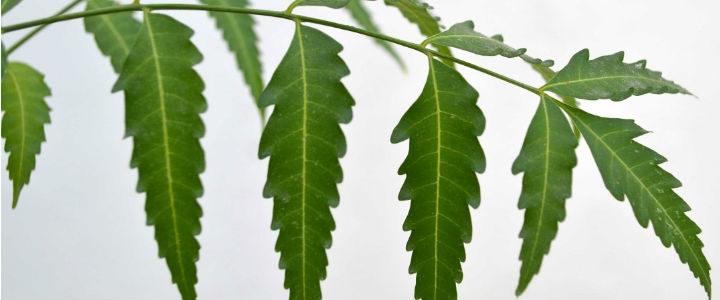Neem is irreplaceable in the Ayurvedic culture of Indian medicine. It has been a prominent component in treating many diseases since ancient times. there is not a part of it, that isn’t considered important. the bark, leaves and seeds are frequently used, whereas it’s roots, flowers and fruits are less frequently used, thus it’s name, ’one tree pharmacy’.
Health Benefits and uses of Neem
Going by parts, we see that the Neem leaf is most frequently used. Often it is boiled in water and then used to treat infections, dandruff, acne, wounds and even as a mosquito repellent because of it’s anti bacterial properties.
The leaf can be consumed as well used externally as an anti-defectant. The leaves are used for treating leprosy, eye disorders, intestinal worms, stomach upset, loss of appetite, skin ulcers, diseases of the heart and blood vessels (cardio vascular diseases), fever, diabetes, gum diseases (gingivitis) and liver problems.
The leaf is also used as birth control and to cause abortions. It has properties that kill cells, and therefore has to be used with care. It is also a natural insecticide. The bark is used for fever, skin diseases, pain, malaria, stomach and intestinal ulcers.
Neem twigs are often used instead of toothbrushes in the tropics, but this is unhealthy as chewing on Neem twigs regularly can cause illness as well. Also, the twigs can become contaminated with fungi within 2 weeks of harvest. Then twigs are also used for coughs, asthma, hemorrhoids, intestinal worms, low sperm levels, urinary disorders and diabetes. Still always take care that it is used in a limited amount.
The bark as such is rarely used, but it’s extract or oil is more often used. The stem, root, bark and fruit are often used as tonics and astringents. As stated earlier, the fruit, flower and roots are less frequently used. The flower is used for reducing bile production, treating intestinal worms and controlling phlegm.
The fruit works against intestinal worms, bloody nose, diabetes, leprosy, hemorrhoids, urinary tract disorders, phlegm, eye disorders and wounds. The seed and seed oil is used for leprosy and intestinal worms. Also, recently, there are researches on Neem as an anti-cancerial properties.
Though Neem is known as a one tree pharmacy, it is also true that there is insufficient evidence for it being effective against gum diseases, ulcers, fevers, upset stomach, breathing conditions, malaria, worms, skin conditions, heart disorders, diabetes, birth control….
Conclusion
Neem is a very powerful and strong anti-bacterial substance. Although Neem is said to be very effective against a lot of diseases, and skin conditions, it is also true that most of these claims have insufficient evidence to support their stand. Thus always consult a specialist first. Be it Ayurvedic or antibiotic, it is always better to try the prescribed set of medicines first before turning to alternatives.

